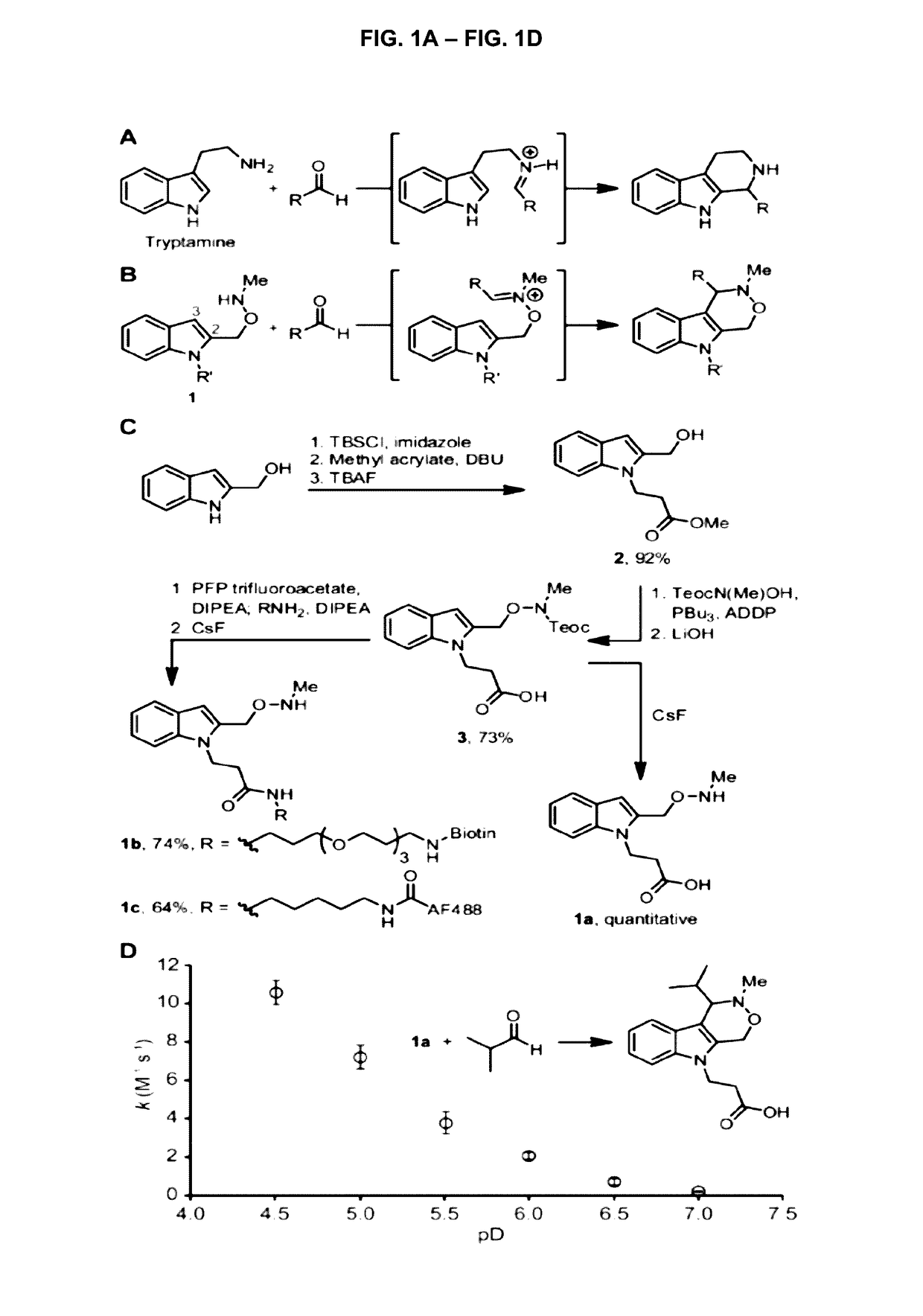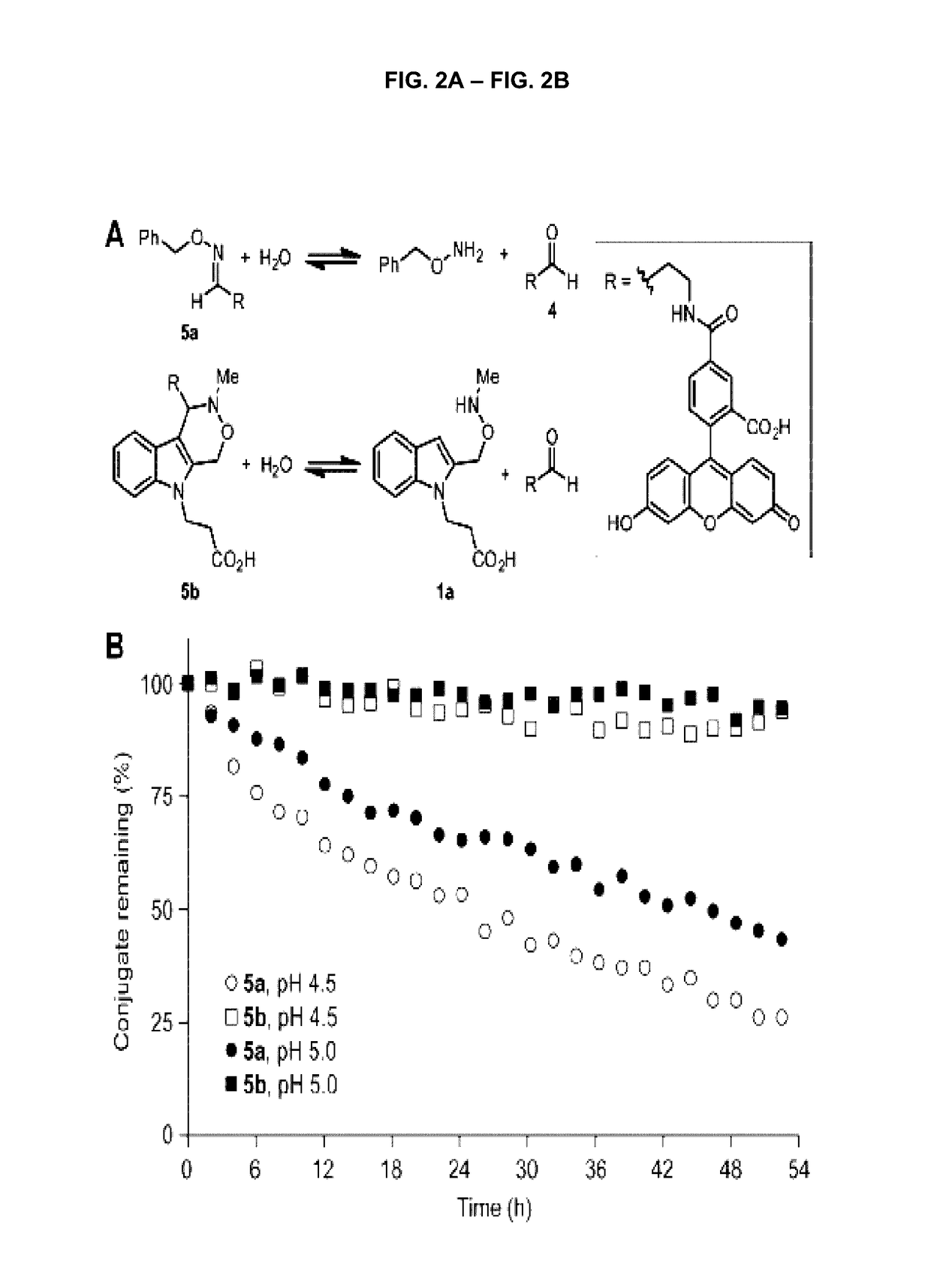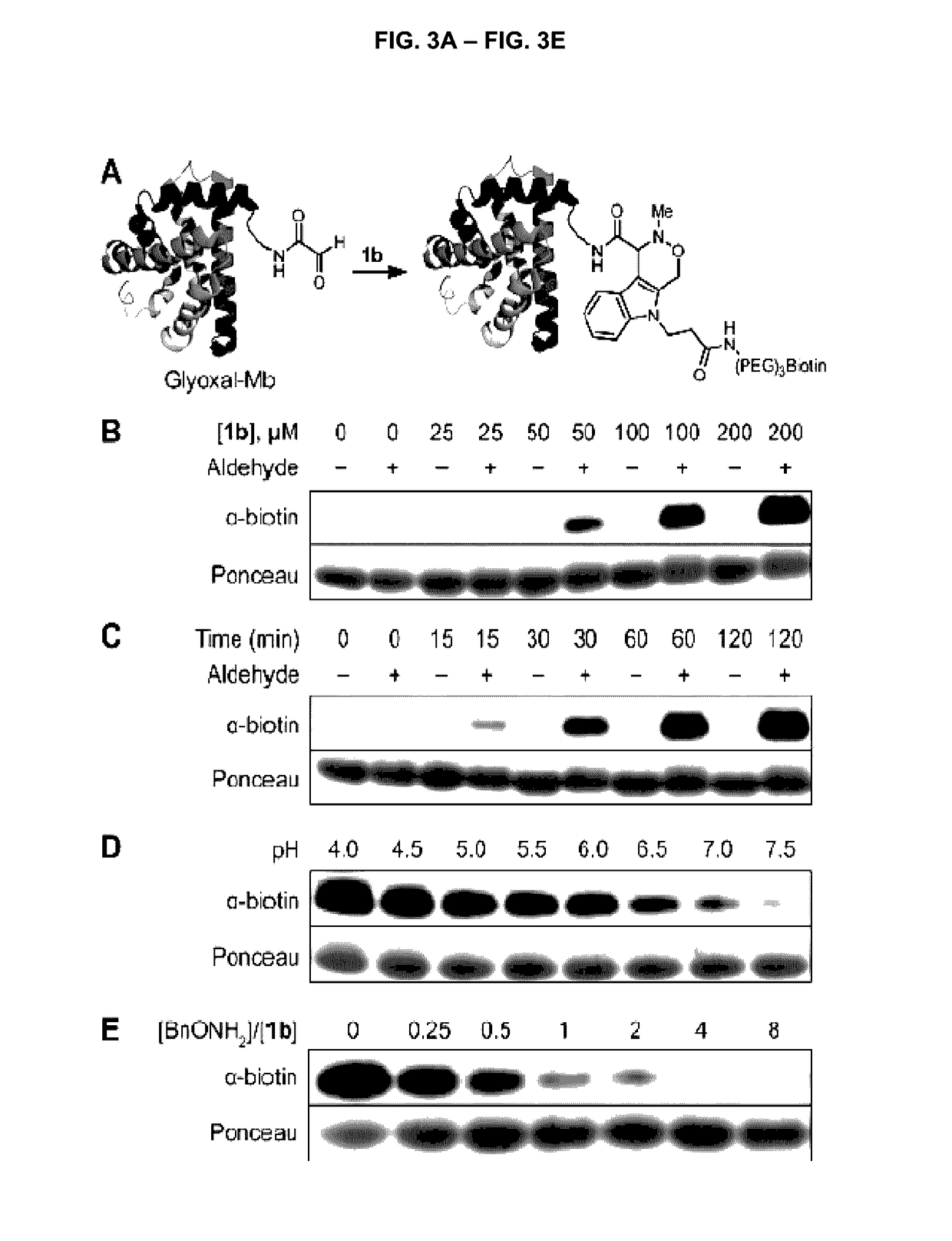Pictet-Spengler ligation for protein chemical modification
a technology of protein chemical modification and ligation, which is applied in the field ofpictet-spengler ligation for protein chemical modification, can solve problems such as undermining utility in situations, and achieve the effect of enhancing the performance of these methods and high-efficiency labeling
- Summary
- Abstract
- Description
- Claims
- Application Information
AI Technical Summary
Benefits of technology
Problems solved by technology
Method used
Image
Examples
example 1
Materials and Methods
A. General Synthetic Methods
[0120]All reagents were obtained from Sigma-Aldrich, Acros, or TCI and used without further purification. Anhydrous solvents were dried and deoxygenated by purification through columns of alumina and Q-5 (1), with the exception of N,N-dimethylformamide, which was purchased in a sealed bottle and stored over molecular sieves. Deuterated solvents were purchased from Cambridge Isotope Laboratories. Solvents were removed on a Buchi Rotavapor R-114 equipped with a Welch 2026 self-cleaning dry vacuum pump or with an Edwards RV3 vacuum pump.
[0121]Thin layer chromatography was performed with Silicycle 60 A silica gel plates and analyzed by UV illumination or 12 staining. Flash chromatography was performed with Silicycle 60 Å 230-400 mesh silica gel. High-pressure liquid chomatography was performed on a Varian ProStar instrument with a UV absorption detector operating at 210 and 254 nm. Preparative-scale HPLC was performed on a 100 Å C18 rever...
PUM
| Property | Measurement | Unit |
|---|---|---|
| pH | aaaaa | aaaaa |
| pH | aaaaa | aaaaa |
| solvent flow rate | aaaaa | aaaaa |
Abstract
Description
Claims
Application Information
 Login to View More
Login to View More - R&D
- Intellectual Property
- Life Sciences
- Materials
- Tech Scout
- Unparalleled Data Quality
- Higher Quality Content
- 60% Fewer Hallucinations
Browse by: Latest US Patents, China's latest patents, Technical Efficacy Thesaurus, Application Domain, Technology Topic, Popular Technical Reports.
© 2025 PatSnap. All rights reserved.Legal|Privacy policy|Modern Slavery Act Transparency Statement|Sitemap|About US| Contact US: help@patsnap.com



